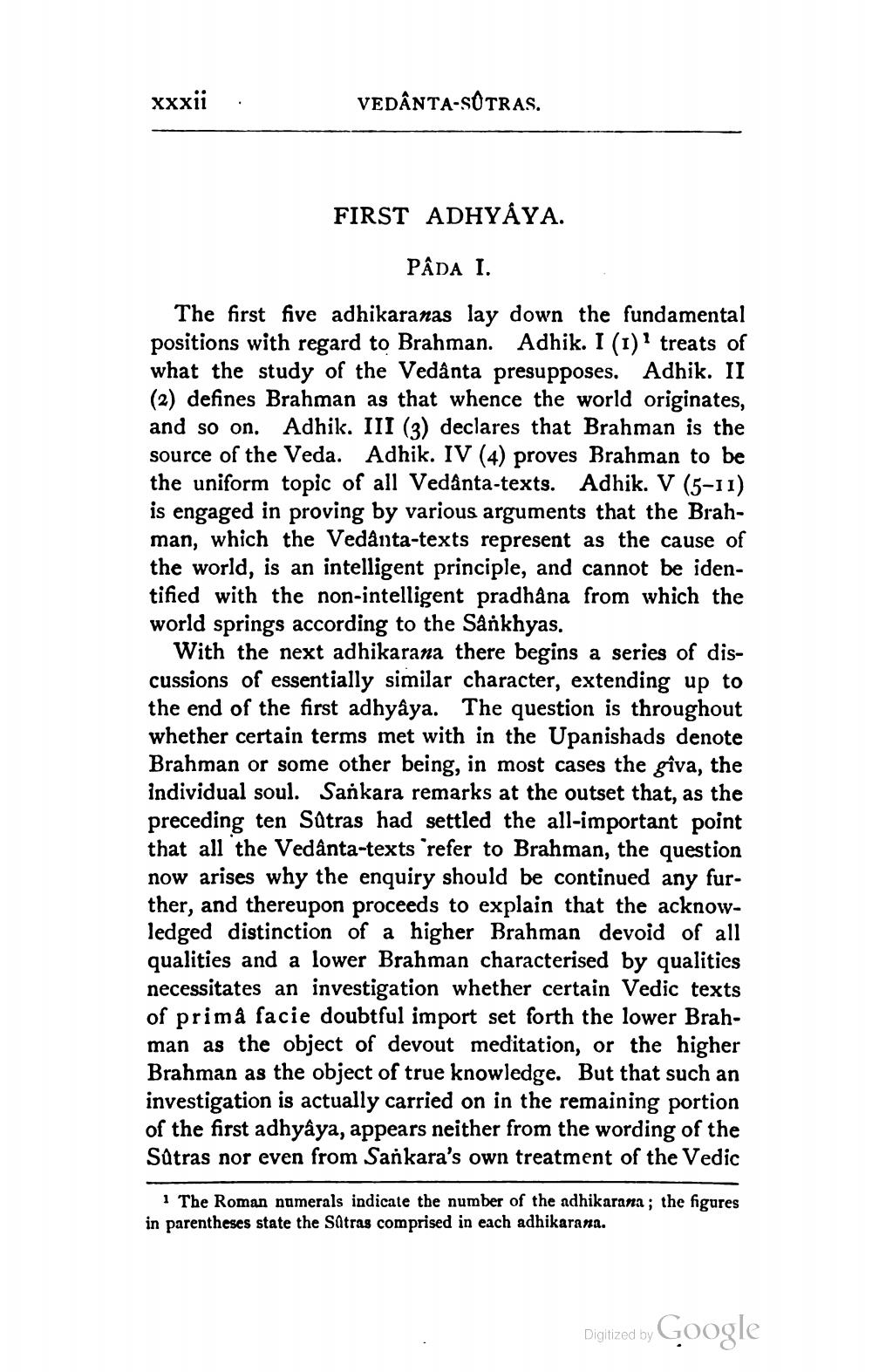________________
xxxii
.
VEDÂNTA-SOTRAS.
FIRST ADHYAYA.
PÂDA I.
The first five adhikaranas lay down the fundamental positions with regard to Brahman. Adhik. I (1)' treats of what the study of the Vedanta presupposes. Adhik. II (2) defines Brahman as that whence the world originates, and so on. Adhik. III (3) declares that Brahman is the source of the Veda. Adhik. IV (4) proves Brahman to be the uniform topic of all Vedanta-texts. Adhik. V (5-11) is engaged in proving by various arguments that the Brahman, which the Vedanta-texts represent as the cause of the world, is an intelligent principle, and cannot be identified with the non-intelligent pradhana from which the world springs according to the Sankhyas.
With the next adhikarana there begins a series of discussions of essentially similar character, extending up to the end of the first adhyâya. The question is throughout whether certain terms met with in the Upanishads denote Brahman or some other being, in most cases the gîva, the individual soul. Sankara remarks at the outset that, as the preceding ten Satras had settled the all-important point that all the Vedanta-texts 'refer to Brahman, the question now arises why the enquiry should be continued any further, and thereupon proceeds to explain that the acknowledged distinction of a higher Brahman devoid of all qualities and a lower Brahman characterised by qualities necessitates an investigation whether certain Vedic texts of prima facie doubtful import set forth the lower Brahman as the object of devout meditation, or the higher Brahman as the object of true knowledge. But that such an investigation is actually carried on in the remaining portion of the first adhyâya, appears neither from the wording of the Satras nor even from Sankara's own treatment of the Vedic
1 The Roman numerals indicate the number of the adhikarana; the figures in parentheses state the Sätras comprised in each adhikarana.
Digitized by Google




